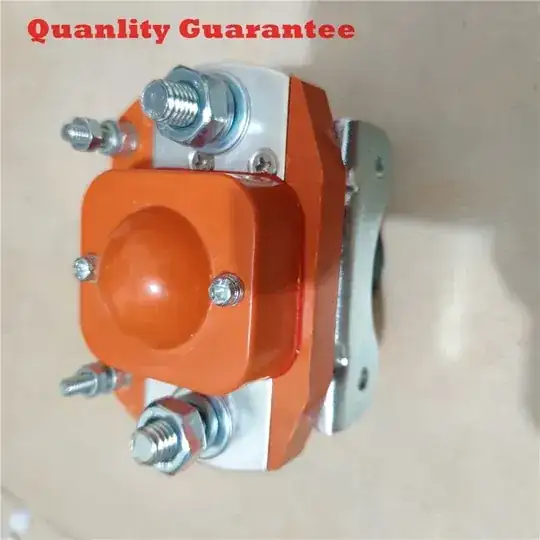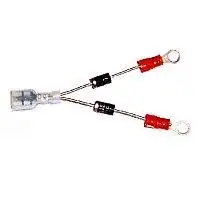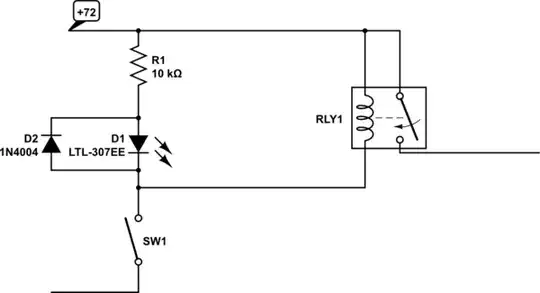I'm upgrading the battery on my electric boat. Currently I have a 72v 100ah LifePO4 battery. I have a solenoid between the controller and the battery. That solenoid is attached to the ignition key.
I just bought 2 more batteries and I intend to put them in parallel. I'm going to install a solenoid on each one, and then join them on a bus bar, which will then go to the main line to the main solenoid, which goes to the controller.
72v solenoid

The goal will be to have a switch on the dashboard for each battery. I want to put an indicator light next to each switch to show the contactor is closed and power is flowing from one side of the solenoid to the other.
I understand there is a way to add a diode on each the positive and negative and then connect an LED's positive in the middle, like this:
Diode Assembly

- Is this even how this works?
- what kind of diode should I use for a 72v system?
- Is there a better way?
Thanks for your help.
